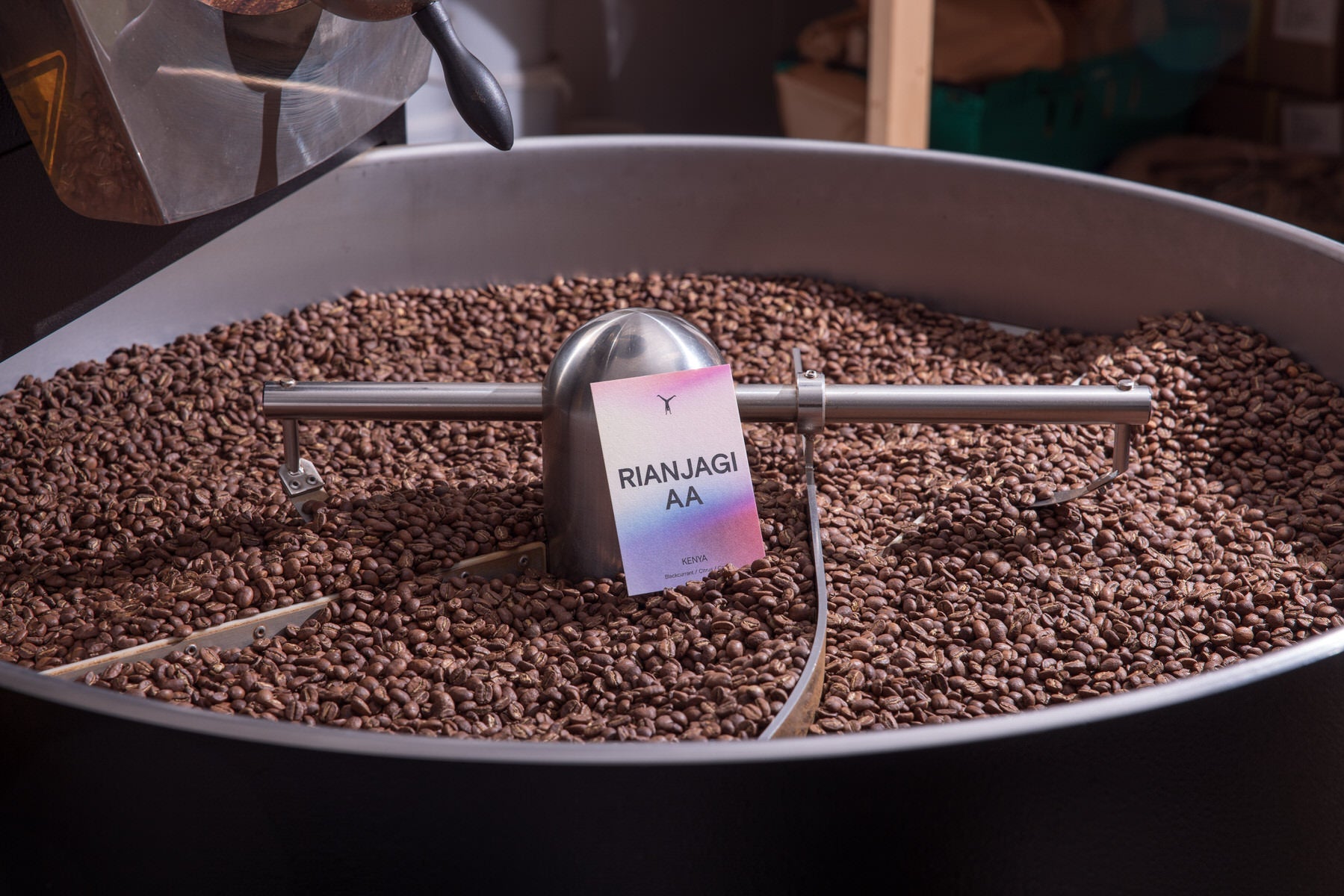

The Truth About Fresh Coffee

18-10-23
Written by Alex
We often hear that freshly ground coffee is superior to pre-ground coffee, and the common narrative in the specialty coffee scene over the last two decades has been that old coffee is bad, and coffee closest to its roast date is best. We’ve often seen people in our café rifling through bags looking for coffee with the shortest roast date. But how long is too long? This is a topic of much debate. It turns out there is no one right answer, as various factors can influence the ideal period. However, let’s explore coffee freshness and provide insights into ideal resting times, usage windows, and storage methods to help you enjoy your coffee at its best.
What is Freshness?
When we talk about coffee freshness, we refer to how well-preserved the intrinsic characteristics and qualities of the coffee are, both in taste and aroma. These qualities are not solely dependent on how close the coffee is to its roast date. Coffee freshness depends not only on time but also on temperature, light, and exposure to moisture and air.
“Freshly Roasted” Coffee & Resting Time
The freshness of coffee is linked to the levels of CO₂ contained within the bean structure. CO₂ is formed during chemical reactions that occur during the roasting process. Newly roasted coffee contains high levels of CO₂—around 1% of its weight. This CO₂ helps preserve the coffee but also impacts flavour and extraction, making coffee brewed too soon after roasting taste inconsistent and sometimes lacking in flavour.
CO₂ escapes from the coffee bean over time. Allowing newly roasted coffee to rest lets the CO₂ levels stabilize, leading to better-tasting and more consistent brews. An ideal resting period is about 7–20 days after roasting, depending on the roast level and brewing method. Brewing coffee earlier than 7–10 days usually results in the coffee changing daily, requiring you to adjust your grind size or make manual alterations to your brew (such as extending the bloom to allow the coffee to degas after water is added). We find it far better to wait until the coffee has begun to stabilize before drinking it. Brewing earlier than 10 days isn’t wrong, but it doesn’t provide consistency.
When to Open and Grind Your Coffee
Once a bag is opened, coffee should ideally be used within 1–2 weeks for optimal flavour. Proper storage can extend this window further. Oxidation occurs when coffee is exposed to oxygen in the air, causing certain compounds to degrade and resulting in stale flavours. Depending on your storage method, this process can happen quickly after opening or be slowed to a minimal amount.
Grinding coffee increases its surface area, exposing it to oxygen and moisture. It also allows it to lose CO₂ within minutes (which acts as a preservative). This is why we recommend grinding fresh for each brew. Pre-ground coffee or coffee left in its ground state develops stale flavours much faster.
Best Storage Methods
At Cartwheel, we take extra steps during production to ensure that the quality of our coffee is preserved. Our bags are first vacuum-sealed and then flushed with nitrogen, replacing most of the oxygen inside. The bags are then heat-sealed, creating an environment that minimizes oxidation. Each bag also contains a one-way valve to allow CO₂ to escape during resting.
Here are some tips for coffee storage to preserve freshness:
- Keep your coffee in its sealed bag until you intend to brew it.
- Grind your coffee fresh before brewing to reduce oxygen exposure.
- Store opened coffee in an opaque, airtight container to minimize light, moisture, and oxygen exposure.
- Seal your bag tightly between uses, squeezing out any air.
- For longer storage, freeze coffee in an unopened bag or in pre-weighed airtight portions to avoid condensation.
- Don’t pour beans out of the bag for sampling; instead, use a scoop to retain nitrogen and CO₂ (which are heavy) inside the bag.
- Let coffee rest for 7–10 days for more consistent brews. Correctly stored, you don’t have to consume it within this timeframe!
- Lightly roasted coffee retains freshness longer than dark-roasted coffee (Dark roasts are less dense, therefore releasing it’s CO2 faster and oxidises more easily).
- Temperature matters: an increase of 10°C halves a coffee’s shelf life, while a decrease of 10°C doubles it.
- Unopened, lightly roasted, vacuum-sealed, and nitrogen-flushed coffee can be stored at just under room temperature (15°C) for at least three months with no noticeable difference from coffee roasted three weeks ago.
- For those of you who like a hard and fast rule – use opened coffee within 2 weeks. Use unopened coffee within 3 months. Use frozen coffee within 1-2 years.
Conclusion
Coffee isn’t better immediately after roasting, and coffee freshness isn’t just about the time between roasting and consumption. Freshness depends on preserving the physical and chemical components of coffee, both of which are affected by exposure to oxygen, moisture, light, and temperature.
By controlling the factors that lead to the degradation of coffee freshness, coffee can actually have a very long shelf life. Misconceptions about coffee freshness often lead to wasteful practices, which we aim to change.
So, when you hear the term "fresh coffee," consider whether it refers to recently roasted, newly opened, or freshly ground coffee—or the broader concept of preserving a coffee’s quality and attributes by managing these key variables.
We hope this deep dive helps you improve the quality of your brewing and boosts your confidence in storing coffee for long-lasting freshness.
